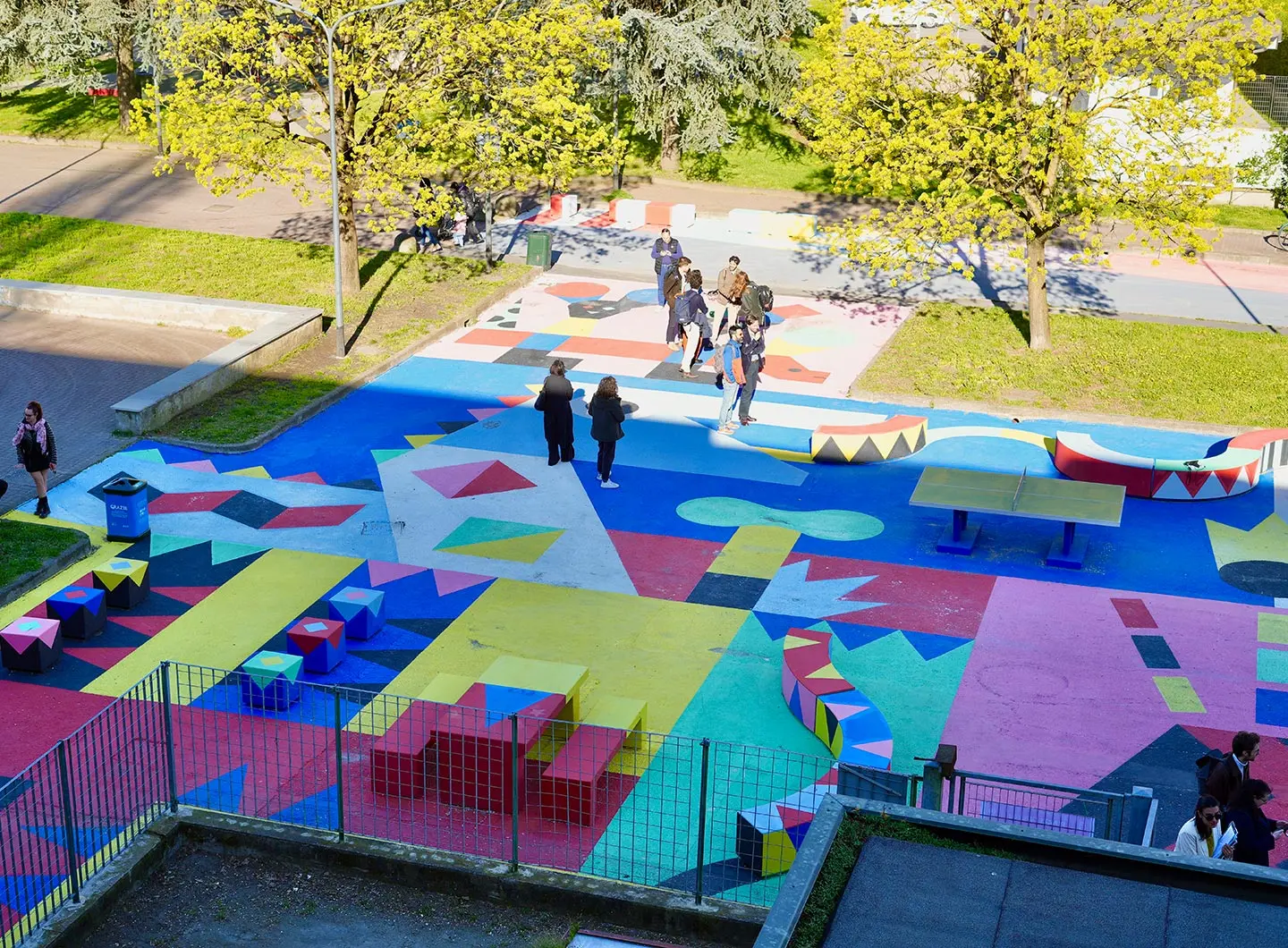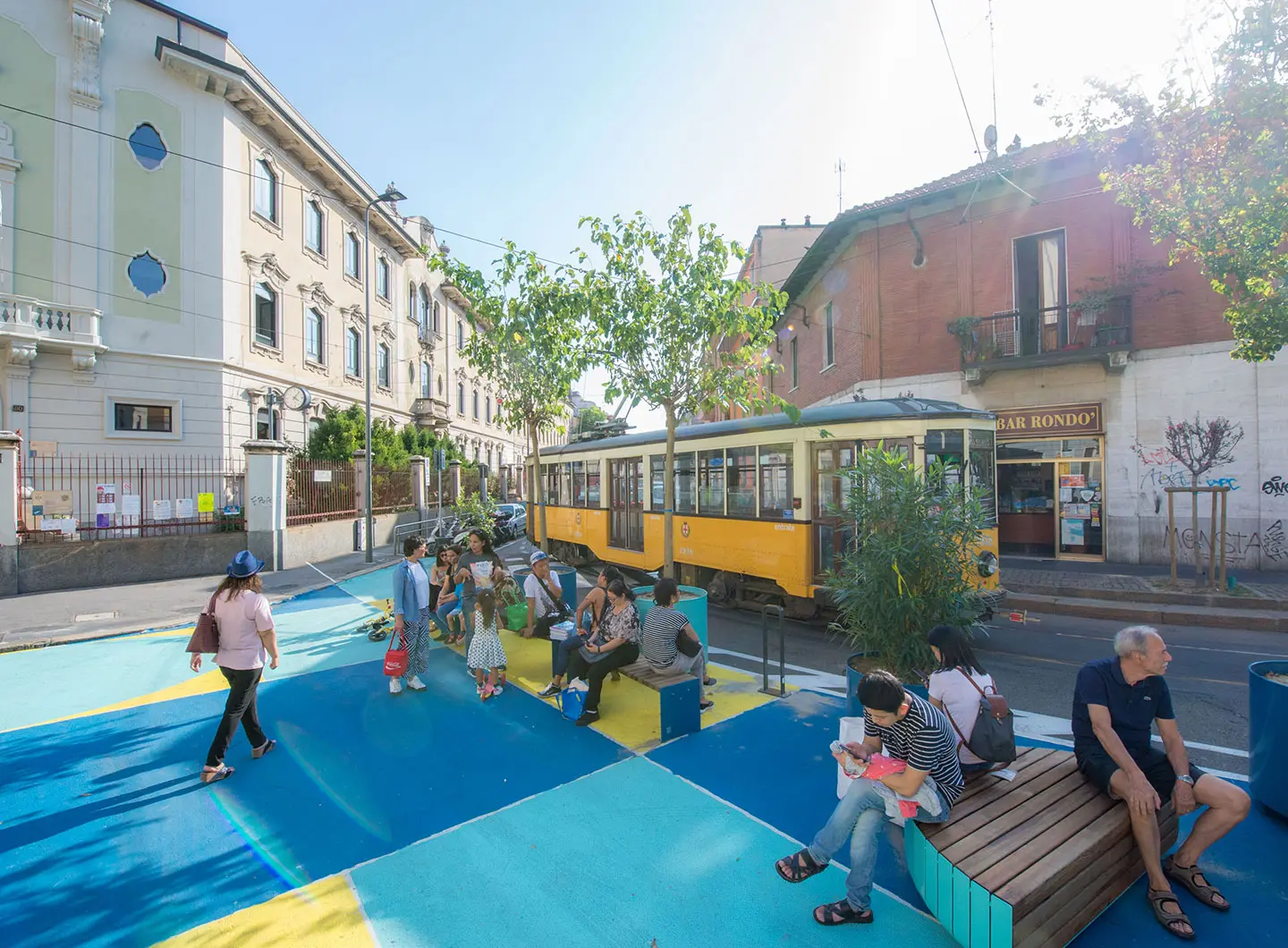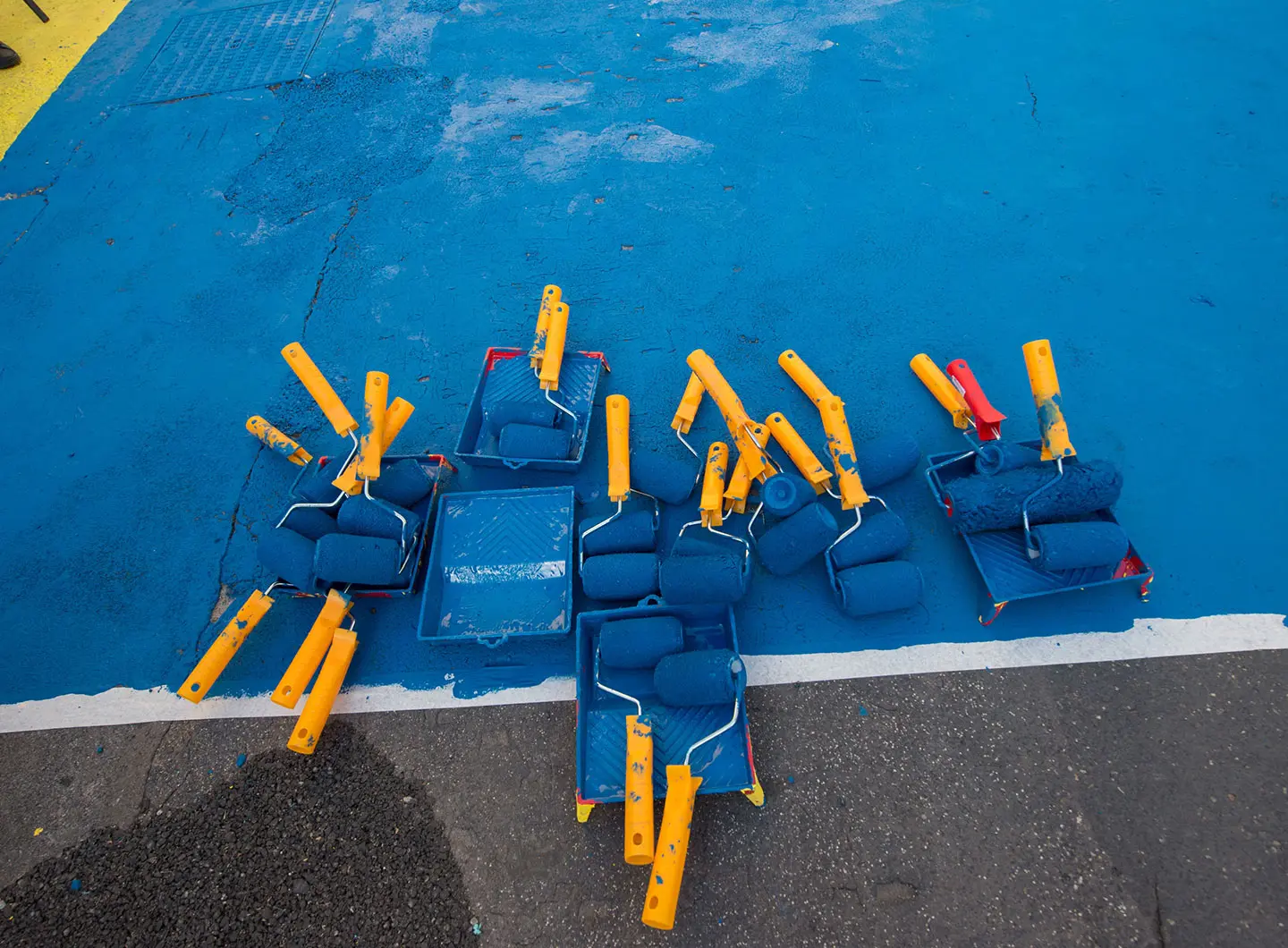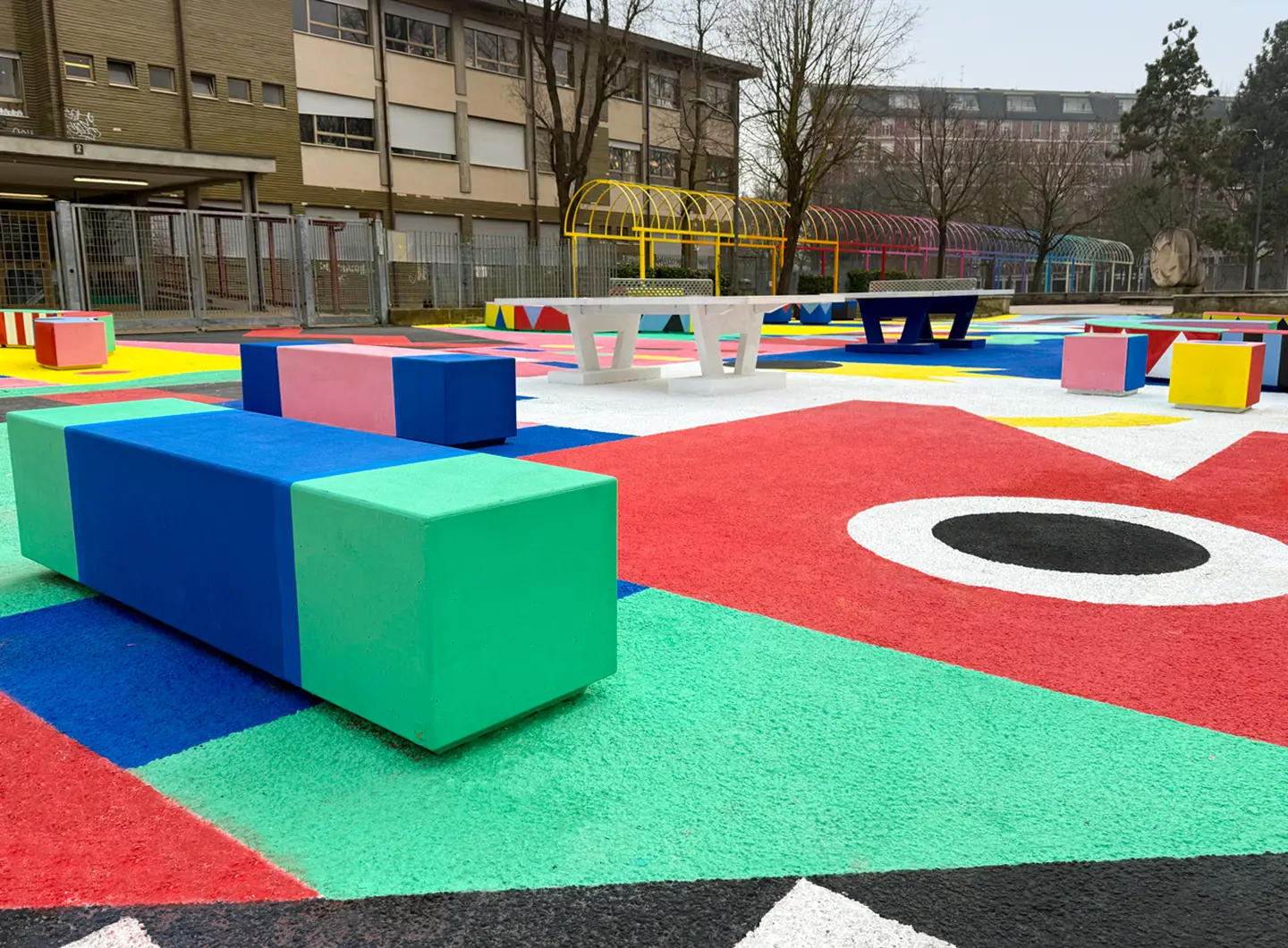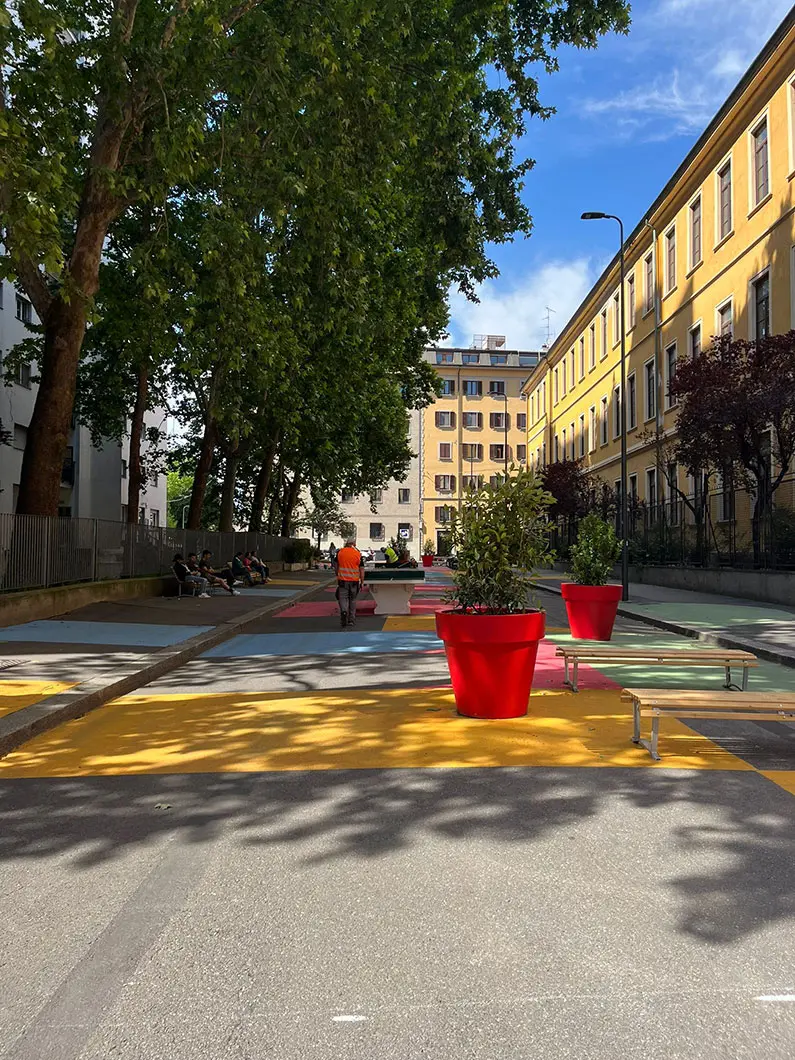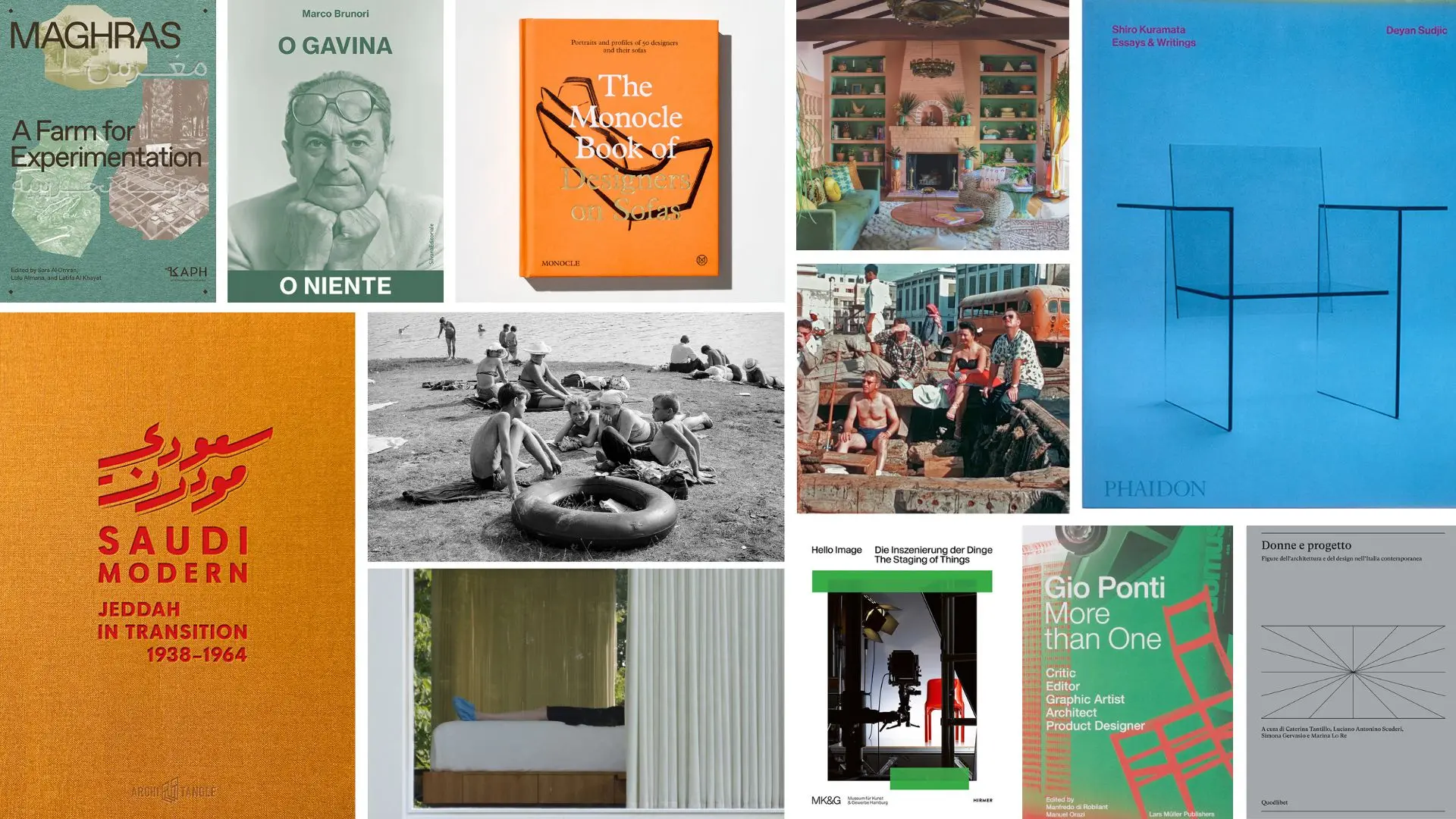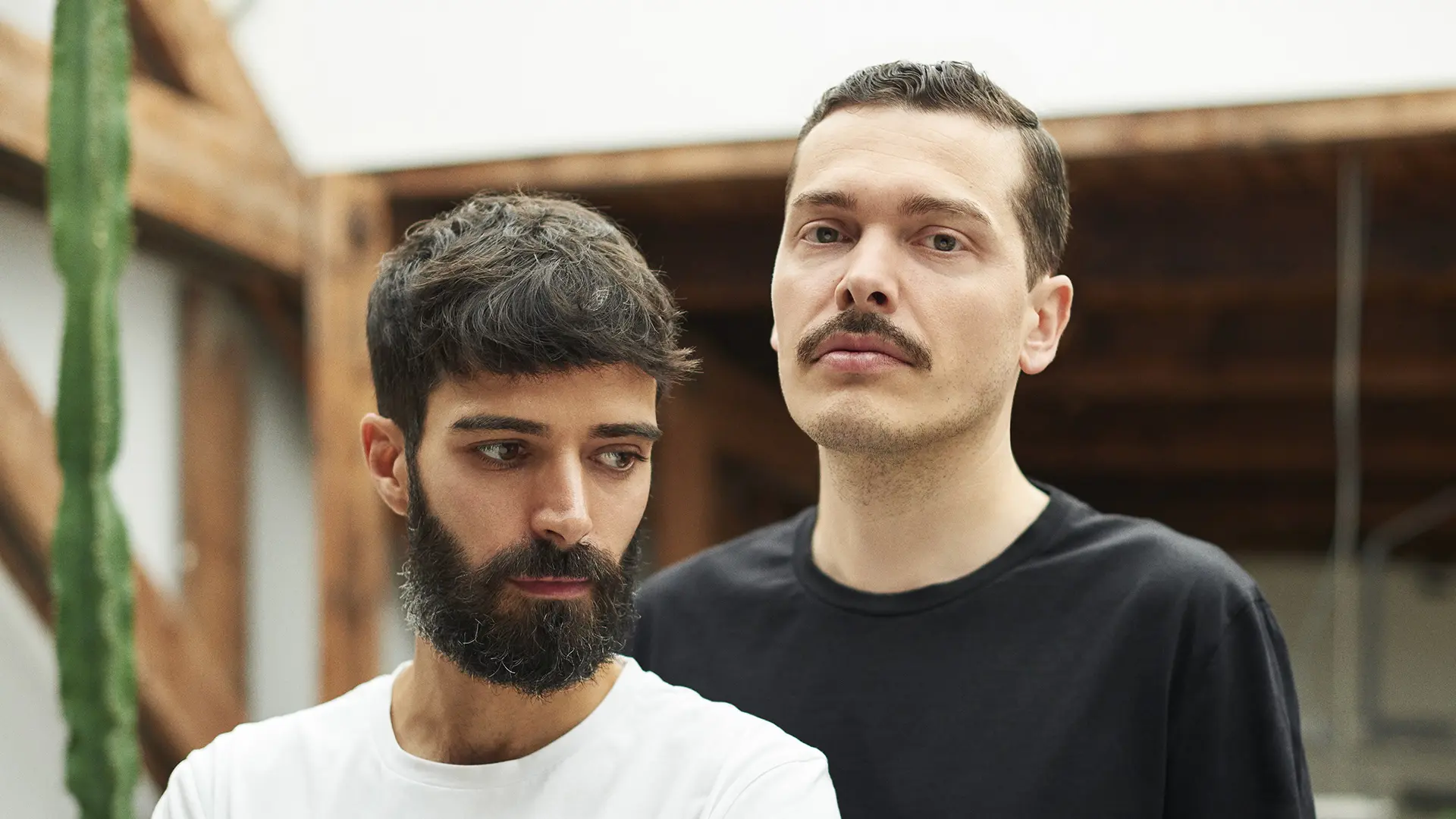A journey through women’s interior design, three iconic monographs and the links between design, photography and marketing, up to the transformation of Jeddah, social innovation and a reportage by Branzi and... 50 designers on the sofa
The Piazze Aperte scheme is really changing the face of Milan
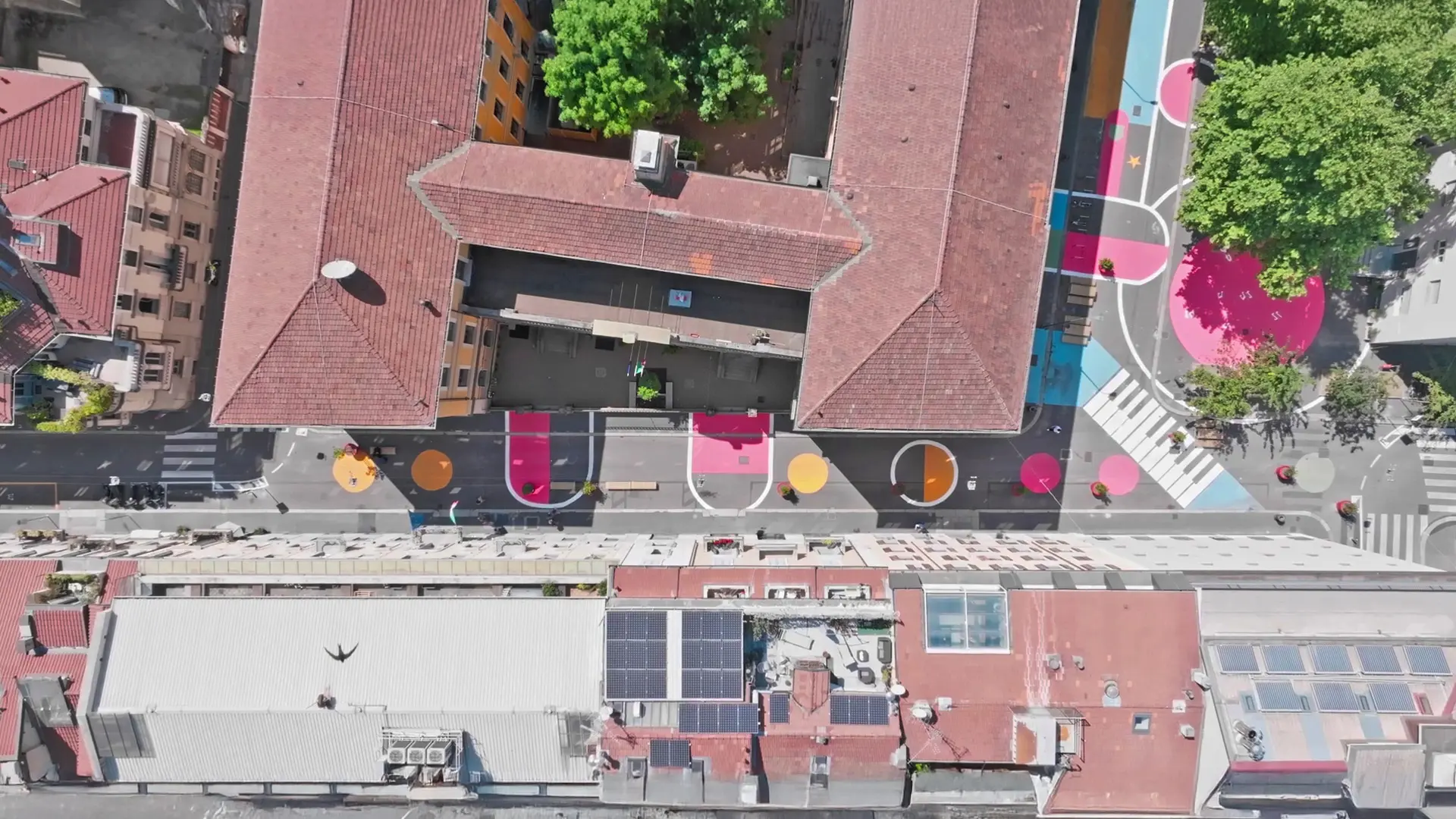
Piazze Sonore, Piazza Alba dell'Acqua - Ph. Andrea Croci x studio Ro.K
Since 2018, the two local governments helmed by Mayor Giuseppe Sala have closed more than fifty of the city’s streets and roads to traffic – but not to people. And this is just the beginning
Between 2018 and 2019, when the Milan Municipality’s work on the first Piazze Aperte [Open Squares] began (between Via Spoleto and Via Venini, in the NoLo district; Piazza Dergano; Porta Genova and Piazza Angilberto II), there was still a need to explain the meaning of tactical urban planning, geared to the democratic and low-cost reconversion of city spaces. The cultural transition cannot be said to have been definitively achieved, but the collective imagination is beginning to digest the presence of murals on the tarmac, tubs of flowers, open-air ping pong tables and bike racks in areas formerly open to cars.
This is all due to an initiative which, involving residents, associations and private companies, is concretely changing the face of the Lombard capital. Promoted by the Municipality of Milan and developed with AMAT (the City of Milan's Agency for Mobility and Environment) in collaboration with Bloomberg Associates and the Global Designing Cities Initiative, the Piazze Aperte project issued two calls for proposals in the Open Squares in Every District and the Open Squares for Every School categories.
The results are already tangible. Over six good years, the two local governments helmed by Mayor Beppe Sala have given 56,000 square metres of what can genuinely be described as public space back to the city’s residents.
The municipal data translates into 60 squares or pedestrian streets, including 26 school roads; 430 benches, 650 bike parking stalls, 55 picnic tables, 43 ping pong tables and a total of 460 potted plants, planters and boxes for raised vegetable gardens.
In some areas (such as Via Giacosa-Via Rovereto, Piazzale Lavater, Piazza Dergano and Piazza Belloveso) the Municipality decided to implement a “definitive arrangement”, rather than a temporary town planning tactic. Recently, during the 16-18th May Participation Forum, a further extension to this extremely popular project, which is seeing a higher number of applications than the objective implementation capacity of the Municipality, was announced.
“The NoLo district intervention paved the way for the pedestrianisation of the streets in front of schools. Before, there was an illegal parking lot in front of the school, with a sort of barrier that prevented girls and boys from going on the street. That barrier has been dispensed with, because we want people to enjoy the spaces freely," said Marco Mazzei, one of Sala’s city councillors and President of the Active Mobility and Accessibility Commission.
The name “Piazze Aperte” packs a powerful punch from a communication point of view, because pedestrian spaces are open to people and closed to motor vehicles. The project aims to transform even simple streets into actual squares accessible exclusively on foot or by bike, rather as things were before the mass motorisation boom during the Fifties and Sixties. It’s a return to the past with an eye to the future, which many European, Asian and American cities embraced well before Milan, which struggled when it came to road safety issues. Eliminating parking spaces (even illegal ones) and denting the dominance of the car, however, can never be taken for granted in the most motorised country in the European Union.
The benefits of the Piazze Aperte scheme are not merely confined to the areas of intervention, however. Apparently isolated pedestrianisation can give the local government an opportunity to change the spirit of entire districts. These spaces simplify the creation of vehicle-free and bike lanes and 30km/h Zones in the surrounding streets. Projects like Open Spaces trigger a change of mentality (and mobility) with tangible results, because improving a city means having the courage to be unpopular and rise above controversy over changes to road networks, for example.
The Piazze Aperte project is destabilising, in that it affects environments used to certain types of colours, layouts and space management models. Bright colours, ping pong tables and markings on the tarmac are disrupting elements in a city in which everyone is out and about doing things. It’s a cultural shock that brings with it a transformative capacity. But, once the shock is absorbed, this dimension starts becoming an integral part of the life of a city,” Mazzei continued, who insists on the need to create spaces for people to be in, not just transit through.
It’s a simple but in some respects revolutionary concept, compared with how we have been used to using our urban spaces, often considered cramped, grey and inhospitable, as if they were the backgrounds to our passage from point A to point B. Tactical urban planning thus follows the mantra of the journey being more important than the destination. It’s a new approach, bringing with it not just social benefits but also environmental and safety ones for the most vulnerable.
Thus, thanks in part to the Piazze Aperte, Milan has become the second European city – after London and ahead of Paris – in terms of the diffusion of school roads, present in the vicinity of 25.9 percent of the capital’s primary schools. This is certified by the new Clean Cities report on cities in which mobility is more tailored to children. Milan's 23rd place in the general ranking can be ascribed the low score obtained in the indicators for cycle paths and roads with 30 kilometres per hour speed limits, a sign that there is still much work to be done to reach continental excellence.
Marco Mazzei went on to say that “another issue being brought to light by Piazze Aperte concerns the use of public spaces at particular times. During the daytime, they are mostly used by children and parents, while during the evening they are more likely to be filled with adults sitting down, chatting and having a glass of beer. These are situations that can have an impact on districts, as well as creating some perplexity among residents. It is a question of balancing the needs of those who go to bed early and those who want to have fun. Some amazing spaces are being created, which people are really keen to use. As they increase, however, the locals will disperse more.”


 Sustainability
Sustainability
